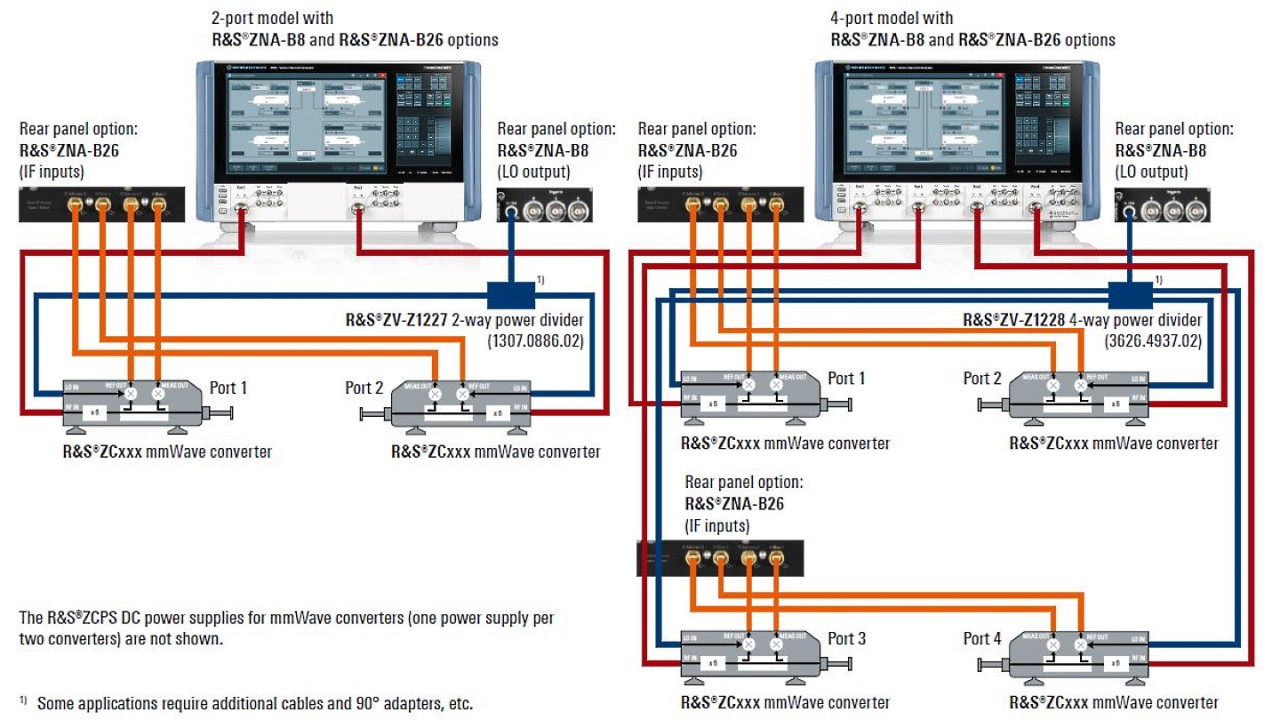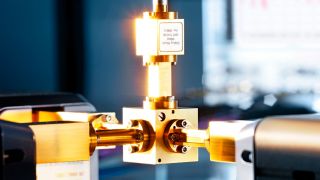Rohde & Schwarz solution
The R&S®ZNA vector network analyzer (VNA) offers features that make it superior in performance and cost-effective at the same time, delivering maximum return on investment. LO and measurement signals are accessible with the R&S®ZNA-B26 direct IF access option (rear IF inputs), and external frequency converters can be connected to the back of the instrument, freeing up the front panel ports and providing greater flexibility. Using these direct IF inputs also improves the standard performance of many converter setups, e.g. in terms of dynamic range, since the receivers’ frontend mixer stages are bypassed.
The R&S®ZNA-B8 mmWave converter LO option (rear LO output) makes it possible to feed the LO signal to the converters.
With this option, a 2-port or 4‑port R&S®ZNA can be configured to interface directly with the mmWave converters. An external generator is no longer needed, helping cut costs in 2-port or 4-port mmWave applications. Fitting this option to a 4-port R&S®ZNA model frees up all four test ports on the analyzer front panel, allowing for a full 4-port mmWave configuration with four converters. The LO output on the instrument rear can deliver up to +25 dBm signal power up to a frequency of 26.5 GHz. This perfectly satisfies the converters’ power requirements, even when long cables are used.
The R&S®ZNA vector network analyzer 4-port models offer two other unique features that make them the most flexible instruments on the market:
- R&S®ZNA-B5 2nd internal LO source for R&S®ZNA 4‑port models:
Allows the analyzer’s internal receivers to be tuned to two different frequencies simultaneously. This makes it possible to characterize complex, frequency-converting devices quickly and easily in terms of both magnitude and phase, even with mmWave converter setups.
- R&S®ZNAxx-B3 3rd and 4th internal source for R&S®ZNA 4‑port models:
Provides two additional internal sources so that each port has its own independently controllable signal source.The combination of the R&S®ZNA-B5 and R&S®ZNAxx-B3 options enables measurements on frequency-converting devices in the mmWave range and allows users to mix and match different frequency converters (which have different frequency plans) to handle challenging measurement tasks.








